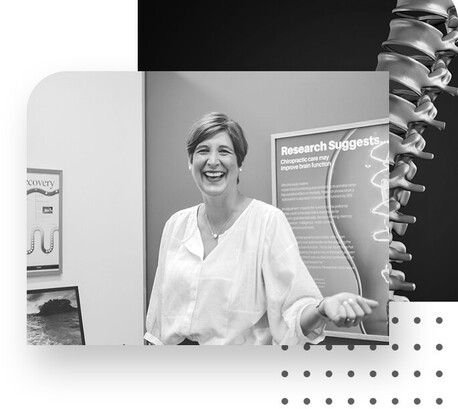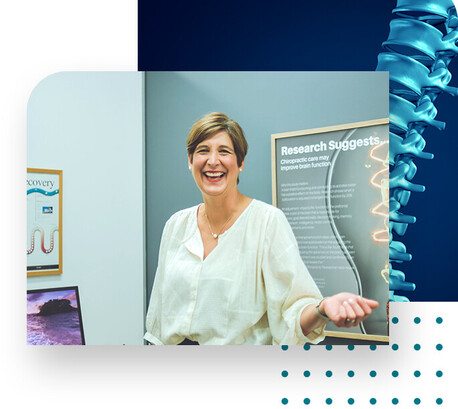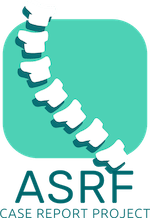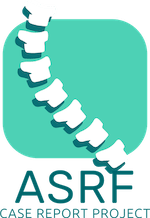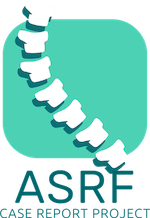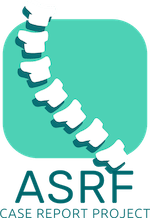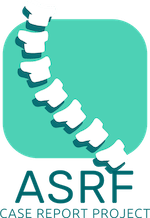Second Quarter 2022 Asia Pacific Chiropractic Journal
Issue 2.6 'Adaptability'
Ebrall: Editorial The Chiropractic Board of Australia and its evidence-free position on the chiropractic care of children: A call for action
Rome & Waterhouse: A neurological evidence base for the Vertebrogenic Dyspepsia Syndrome: A somatosensory link to visceral dysfunction
Salah: Spinal decompression (WCCS Exposition)
JC Smith: Washington, Rush, Sweet & Burr
McKibbin: Point of View - Iatrogenesis
Schmitt & McCord: Relieving spinal stress with ‘Emotional Recall QuickFix' technique
Clinical Huddle with Christopher Meyer: Chicken Sexing, Tacit Knowledge and Gonstead
Maffetone P: Covid-19: A look back at an alternative view
Buerger M: Adapt or Die: A look at the role of chiropractic care in Neuro-adaptation
Kolterman S, et al: Improvement in memory, balance and hearing in a 91-year-old male under chiropractic care: A Case Report
Blonigen A, et al: Resolution of nocturnal enuresis in 9 year-old male under chiropractic care: A Case Report
Marsilla-Alarcon E, et al: Improved scoliosis in 13-year-old female: A case report
Pryjma S, et al. Improvement in digestion and coordination following chiropractic care in a 4-year-old male: A case report
Pryjma S, et al. Improved posture and physical resilience through chiropractic care in 3-year-old female: A case report
Steinberg B, et al. Improvement in Physical Resilience and Management of ADHD in a 12-year-old Male under Chiropractic Care: A case report
Treahy-Geofreda T, et al. Improved Physical Adaptability in a 3.5-Year-Old Female with an Abnormal Birth History: A case report
Ullman E, et al. Resolution of Periodic Fever Syndrome in 3-year-old female: A case report
Our top 3 selections:
Nakajima & Fukami: A study on Related Factors to Congenitive ability of Joint Position Sense inAnkle [Abstract: Japanese & English]
Wittig: AK in phlebological practice - opportunities and experiences [Abstract: German & English] Paper in German
Wittman R: Lipolymphedema - a successful strategy with tools provided by AK [Abstract: German & English, Paper in German]
Disclaimer
This journal is a professional journal by chiropractors for chiropractors. Readers not fully trained as a chiropractor should not act on their own on any information published in these pages and should always discuss their situation with their chiropractor.
The papers addressing COVID report current information at their time of writing. The topic is fast moving and readers are encouraged to extract threads from what we publish here and undertake their own searches for the most recent information.
Note regarding authorship
The Asia-Pacific Chiropractic Journal formally states it follows the requirements of the International Committee of Medical Journal Editors (ICMJE).
The ICMJE guidelines state that in order to qualify for authorship of a manuscript, the following criteria should be observed:
Substantial contributions to the conception or design of the work; or the acquisition, analysis, or interpretation of data for the work; AND
Drafting the work or revising it critically for important intellectual content; AND
Final approval of the version to be published; AND
Agreement to be accountable for all aspects of the work in ensuring that questions related to the accuracy or integrity of any part of the work are appropriately investigated and resolved.
Generally the first author listed on a paper is the author who ‘owns’ the data, the author who has done the essential work to allow the paper to be written. On this basis the apcj assigns first-authorship to the chiropractor who provides the patient data as the Intellectual Property of the case report. It is the policy of the Journal that the first author retains IP Rights on their data and work.
The format followed by the Journal is to list the first author first in the paper by-line, and then as the right-hand block of ‘author details’ at the ends of the paper. We expect the first author to be the author responsible for all further communication about the paper from readers hence their email address is given for this purpose.
The paper-as-published reflects the standard processes that all papers undergo when they are (i) generated by a research group and (ii) peer-reviewed with requests to re-write for various reasons. The Journal accepts that the ASRF has developed a task-specific research group to refine the outline of a case provided by a field practitioner. This research group is led by Clare McIvor and includes Ruth Postlethwaite and, from time to time, senior students who seek ‘placement’ with a research group to enrich their studies.
Each contributing author to any one published Case Report is a person who has made a defensible intellectual contribution to the paper across a range of inputs. All such authors rightly earn inclusion in the authorship of such report and are duly named as such.
Each published Case Report can be taken on face value as representing the combined intellectual input of all named authors. There are no ghost-authors or hidden contributors.
As Editor, I take full responsibility to ensure the Journal’s requirements are adhered to.
Phillip Ebrall
Editor
BAppSc(Chiropr), GC Tert Learn Teach, MPhotog, PhD, DC (Hon), FACCS, FICCS
Further reading:
Ebrall PS. Ethical considerations for chiropractic researchers. In, Lawrence DJ, ed. Advances in Chiropractic, Vol 3. St Louis, Mosby, 1996: 245-68.
Ebrall PS. Defensible statements: an ethical consideration for scholarly writing. J Chiropr Humanities 1995; 5(1):19-27.
Ebrall PS. Commentary: The ethics of publication. J Chiropr Ed 1993 Sept:43-51
The Chiropractic Board of Australia and its evidence-free position on the chiropractic care of children: A call to action.
Abstract: No child seems to have died at the hands of a chiropractor in Australia and very, very few have reported discomfort beyond a little crying. Yet the Chiropractic Board of Australia maintains a dated interim policy that ‘advises chiropractors to not use spinal manipulation to treat children under two years of age, pending the recommendations arising from the independent expert review’, in spite of also expecting ‘chiropractors ensure their clinical practice is consistent with current evidence and/or best-practice approaches.’ The review was completed 2½ years ago and found no evidence of harm. There are no possible grounds for the Board to not immediately rescind its ‘interim' guidance. To not do so is to contravene the overarching policy for Boards to ‘advocate for kids’ and to continue to deny Australian children their basic human right of access to chiropractic care.
Indexing Terms: chiropractic; pediatrics/paediatrics; Chiropractic Board of Australia.
Cite: Ebrall P. The Chiropractic Board of Australia and its evidence-free position on the chiropractic care of children: A call to action. Asia-Pac Chiropr J. 2022;2.6. URL apcj.net/papers-issue-2-6/#EbrallEditorial2022Q2
Primal principle, pandemics, and the price of progress: How chiropractic’s major premise, cultural anthropology, and ancient scripture shout in unison where we’ve gone wildly wrong
Abstract: Until we decide to walk naked back into the forest and become hunter-gatherers, we are all engaged in a brand of eco-terrorism, even if you opt for electrical cars, recycling bins, and vegan cuisine. Some of us are simply more out of equilibrium than others.
The way to end our long history of infectious and degenerative pandemics is to become practicing biological fundamentalists by adopting, wherever possible, primal, pre-agricultural behaviours. Doing so first requires the acceptance of what is presented in this essay, as an expanded appreciation of chiropractic’s traditional philosophy should make this a no-brainer for any chiropractor with an ontological bias that places an ‘all wise’ intelligence at the helm of material manifestation.
A partial list is given of primal behaviours traditional chiropractors should consider adopting for themselves and their families, and then impart to their patients
Indexing terms: Universal Intelligence; Innate Intelligence; Educated Intelligence; Primal behaviour; chiropractic; pandemic.
Cite: Seiler E. Primal principle, pandemics, and the price of progress: How chiropractic’s major premise, cultural anthropology, and ancient scripture shout in unison where we’ve gone wildly wrong. Asia-Pac Chiropr J. 2022;2.6. URL apcj.net/papers-issue-2-6/#SeilerPrimalPrinciple
A neurological evidence base for the Vertebrogenic Dyspepsia Syndrome: A somatosensory link to visceral dysfunction
Abstract: Literature is reviewed which portrays the neurophysiological basis and clinical recognition for the spinal manipulative rationale of a subluxation-related vertebrogenic form of dyspepsia. This was related to the cervical spine and the vagus parasympathetic innervation, and the dorsal spine with its sympathetic and spinal nerve influence. Practitioners of chiropractic, medicine, osteopathy, acupuncture, and physiotherapy have all published on this topic. Two key spinal regions appear to be involved - the cervical spine’s influence on the parasympathetic vagus, and the sympathetic innervation through the splanchnic innervation of the mid-dorsal spinal nerves.
No evidence could be located which contradicted the neurophysiology of this biomechanical model of care for the condition. With physiological evidence of positive outcomes, a vertebrogenic biomechanical focussed model of care is justified as one of the options for functional dyspepsia (FD).
Indexing terms: Vertebrogenic; functional dyspepsia; dyspepsia; subluxation; GERD; indigestion gastrointestinal.
Cite: Rome P. Waterhouse JD. A neurological evidence base for the Vertebrogenic Dyspepsia Syndrome: A somatosensory link to visceral dysfunction. Asia-Pacific Chiropr J. 2022;2.6. URL apcj.net/papers-issue-2-6/#RomeWaterhouseDyspepsia
Covid-19: A look back at an alternative view
Abstract: Overall, the chiropractic view of healthcare takes a natural focus; it begins with a holistic concept and ends with living that lifestyle. The world’s recent experience with Covid-19 has tested our beliefs. During the Covid-19 pandemic, three scientific papers were published by the author with colleague Professor Paul Laursen, appearing in different scientific journals of Frontiers (1, 2, 3) that brought to light this natural focus. These are reviewed here with the same natural healthcare perspective.
Indexing Terms: Chiropractic; COVID; Syndemic; Natural Health.
Cite: Maffetone P. Covid-19: A look back at an alternative view. Asia-Pac Chiropr J. 2022;2.6. URL apcj.net/papers-issue-2-6/#MaffetoneAnAlternateView
WCCS Director of Secretariat
Spinal decompression in chronic pain
Spinal decompression is discussed as a safe, clinically effective alternative to drugs and surgery for patients with chronic back pain.
Cite: Salah D. Spinal decompression in chronic pain. Asia-Pac Chiropr J. 2022;2.6. URL apcj.net/papers-issue-2-6/#SalahWCCS
Relieving spinal stress with ‘Emotional Recall Quick Fix' technique
Abstract: In a number of ways, spinal problems are often compounded by the presence of stress. Among these ways are the effects of stress on the spine via the sympathetic nervous ‘fight or flee’ reaction. Contrary to popular belief, pain is not a sensation, but rather, an emotional response. Pain and suffering are perceived in the limbic system or ‘the emotional brain.’ The ‘Emotional Recall Quick Fix' technique is extremely valuable for decreasing the effects of stress on the body. This simple technique can be used in the office or by the patient at home and will help both patients and doctors improve the quality of their lives by reducing the uncomfortable impact that we all regularly encounter in the stress filled world we live in today.
Indexing Terms: chiropractic; AK; Applied Kinesiology; Emotional Recall Quick Fix Technique.
Cite: Schmitt WH, McCord KM. Relieving spinal stress with ‘Emotional Recall QuickFix' technique. Asia-Pac Chiropr J. 2022;2.6 URL apcj.net/papers-issue-2-6/#SchmittStressRelease
Adapt or Die: A look at the role of chiropractic care in Neuro-adaptation
Abstract: Neuro-adaptation relies on the brain knowing the status of the body, both the physical as well as physiological state of the body. The brain is “fed” the status of the body via afferent sensory input from the external and internal environment. If afferent sensory input is inadequate or not interpreted properly by the brain, the result will be maladaptive in nature.
Indexing terms: Adaptability; Neuro-adaptation; interoception; chiropractic
Cite: Buerger M. Adapt or Die: A look at the role of chiropractic care in Neuro-adaptation. Asia-Pac Chiropr J. 2022;2.6. URL apcj.net/papers-issue-2-6/#BuergerNeuroadaptation
Long Haul COVID-19 and Subluxation: A case report.
Abstract: A 59-year-old photographer with a presumptive diagnosis of COVID-19 in December of 2019 experienced multiple long-haul symptoms including ‘brain fog’ (deficits in memory and attention), headache, and limited ability to read. These symptoms were exacerbated by COVID-19 vaccinations and booster. At presentation in January of 2022, her reverse digit span was 5, and testing was accompanied by frustration to the point of tears. Attempts at reading produced a headache, forcing her to rely on audiobooks. Recipes she had used for many years were now difficult to follow. She reported an increased intolerance to cold since her illness. After 3 chiropractic visits over a period of 18 days, reverse digit span was 6 and the testing provoked no tears or any apparent frustration. Reading tolerance was improved, and she had experienced one 2-day period during which she had been able to read an entire book without ill effects. Her ability to follow recipes had improved. The chiropractic visits included adjustment of vertebral subluxation at multiple levels, adjustment of cranial faults, reflex therapies, and breathing exercises. We discuss possible mechanisms including disturbed dural mechanics, ischemic penumbra, and hypothyroidism.
Indexing Terms: Chiropractic; Long Haul COVID; ischemic penumbra; hypothyroidism; dural mechanics.
Cite: Masarsky CS, Todres-Masarsky M. Long Haul COVID-19 and Subluxation: A case report. Asia-Pac Chiropr J. 2022;2.6. URL apcj.net/papers-issue-2-6/#MasarskyLongCovid
Dorsal Scapular Nerve Entrapments in Motor Vehicle Accidents: An Applied Kinesiology Chiropractic Case Report
Abstract: Objective This case reports a unique clinical finding that helps chiropractors diagnose the entrapment of the dorsal scapular nerve (DSN), which is frequently involved in motor vehicle accident (MVA) cases. The patient endured 14 months of only partly ameliorative treatment modalities (medical, pharmaceutical, physiotherapeutic, and chiropractic), while the actual cause of her neck, arm and shoulder dysfunction was never diagnosed by her care givers. The missing component for the patient involved a DSN entrapment and interscalene triangle neck muscle dysfunction, which resolved her prolonged MVA symptom picture rapidly.
Clinical Features A 52-year-old female was referred by her brother with a 14-month history of symptoms after a MVA. Her measurable orthopedic and neuromuscular deficits are described after 21 chiropractic and 6 medical visits, including a series of 4 transforaminal epidural steroid injections as treatment.
Intervention Applied kinesiology chiropractic cranial, cervical, TMJ, and muscle subluxations involving the scalene muscles were addressed. At the time of the MVA, the patient’s head was turned sharply to the left. The DSN was injured by the scalene muscles as well as the herniated discs in the lower left cervical spine, and resolution of this ‘double-crush injury of the spine and muscles of the spine’ resolved a great deal of her MVA symptom picture. This case offers the reader a detailed chiropractic review of DSN entrapment, the diagnostic tests necessary to find this problem, and explains the swiftest way to correct this problem.
Outcomes At the end of the first week of care (her third visit), the patient stated that she had been steadily experiencing significant recovery in her pain levels, arm numbness, shoulder ache and weakness, headaches, general body strength, mood, sleep, breathing and energy. For the first time in 14 months her arms, neck, upper back, shoulders, headaches and low back pain felt great.
Indexing Terms: chiropractic; AK; Applied Kinesiology; Dorsal Scapular nerve; MVA; nerve entrapment.
Cite: Cuthbert S. Dorsal Scapular Nerve Entrapments in Motor Vehicle Accidents: An Applied Kinesiology Chiropractic Case Report. Asia-Pac Chiropr J. 2022;2.6. URL apcj.net/papers-issue-2-6/#CuthbertDorsalScapular
Improvement in memory, balance and hearing in a 91-year-old male under chiropractic care: A Case Report
Abstract: A 91-year-old male presented for chiropractic care following recent weight loss and worsening memory loss. It was reported that his vocabulary was roughly 50-60% of its prior capacity.
Objective/Clinical Features: abnormal cervical spine, ligamentous instability at C4-C5 and C5-C6, abnormal calcifications in the thyroid tissues, low blood oxygenation (at 92%), abnormal weight distribution, and abnormal balance and falls risk.
Intervention/Outcomes: He received chiropractic care via the Functional Neurological Technique which uses a friction plate and a friction coefficient in order to determine subluxation, line of drive, completion of treatment and order or adjustment. The adjustment is accomplished with 2-18 pounds of force in sustained contact.
Clinical improvements included noted structural improvement in the structural spine, with improved stability in the cervical spine. The calcifications in the thyroid tissue were no longer evident, and regeneration was now beginning in his disc tissues at C3-C4 vertebra. The patient's blood pressure was now in normal limits (having gone from 138/78 to 120/82), and his bloody oxygen level was now at 100%
Conclusion: Further research is required to confirm and explain this effect, as well as to investigate any inflammatory-brain connections involved in memory loss in older adults without a diagnosis of neurodegenerative conditions under chiropractic care.
Indexing Terms: Chiropractic; Subluxation; balance; memory.
Cite: Kolterman S, Martin A, Postlethwaite R, McIvor C. Improvement in memory, balance and hearing in a 91-year-old male under chiropractic care: A Case Report. Asia-Pac Chiropr J. 2021;2.6. URL apcj.net/paper-issue-2-6/#AverioMemory
Resolution of nocturnal enuresis in 9 year-old male under chiropractic care: A case report
Abstract: Objective/Clinical Features A 9-year-old male presented for chiropractic care with nocturnal enuresis (bedwetting). The child had a history of chiropractic care, but there was a significant time period from his last adjustment. During this time the bedwetting frequency had increased to 3-4 nights in a row. The child had received repetitive antibiotic prescriptions from the ages 0-7 and had injured their ‘tailbone’ two years previous.
Upon examination it was identified that the child was experiencing severe mental stress, high emotional stress, and moderate physical stress. Objective measures of thermal scanning, static EMG, and heart rate variability were recorded and analysed both pre and post chiropractic care.
This examination revealed a minor AHC, a high right shoulder with corresponding right foot flare and sacral torsion. Spinal Galant and ATNR reflexes were retained bilaterally, and the Palmer reflex on the right. Increased tension was noted in sub-occipital muscles, right trapezius, right rhomboid, and bilateral gluteus medius. Subluxations were identified at the levels of C3/4, C6/7, T6/7, and about the Sacrum.
Intervention/Outcomes Care followed a schedule of 2 sessions per week for 6 weeks, followed by a review. Techniques employed included Diversified Manual, Thompson and Logan Protocols. Following the review the schedule of care was revised to weekly sessions for a duration of 4 weeks. At the review it was found there was a complete resolution of nocturnal enuresis for several weeks, significant improvements in muscle tension, improvement in posture, and a reduction in subluxations at the upper cervical complex and Sacrum. Retained primitive reflexes also integrated during this course of care, with the exception of ATNR which remained positive.
Conclusion Chiropractic care may be of assistance in the management of nocturnal enuresis.
Indexing Terms: Chiropractic; Subluxation; enuresis.
Cite: Blonigen A, Postlethwaite R, McIvor C. Resolution of nocturnal enuresis in 9 year-old male under chiropractic care: A Case Report. Asia-Pac Chiropr J. 2021;2.6. URL apcj.net/papers-issue-2-6/#BlonigenEnuresis
Improved scoliosis in 13-year-old female: A Case Report
Abstract: Objective/Clinical Features 13-year-old female presented with the primary concern of scoliosis. There was no history of major surgeries or significant diseases, illnesses, or comorbidities. The patient practices Taekwondo and her reported hip and left knee pain was preventing her from training. The preliminary radiological evaluation revealed a scoliosis of 13°, with dysmetria of 14 millimetres. Bipedal stabilometry was used for the posturography evaluation. The Index Eyes Open - Closed was performed with a starting score of 93. Her average angle Left-Centre-Right: -4.45 with eyes open and -3.76 with eyes closed.
Intervention/Outcomes The patient attended 12 appointments. Chiropractic checks and adjustments were performed with Diversified Technique. Evaluation of vertebral subluxations were performed with leg checks, motion palpation, algometry, and thermography.
Conclusion Further research should examine the possibility that improvements of scoliosis under chiropractic care may be related to an increase in proprioceptive ability and spinal/skeletal adaptability
Indexing Terms: Chiropractic; Subluxation; Adaptability; scoliosis, proprioception.
Cite: Marsilla-Alarcon EM, Postlethwaite R, McIvor C. Improved scoliosis in 13-year-old female: A case report. Asia-Pac Chiropr J. 2022;2.6. URL apcj.net/papers-issue-2-6/#EmilioScoliosis
Improvement in digestion and coordination following chiropractic care in a 4-year-old male: A case report
Abstract: Objective/Clinical Features 4-year-old male presented for chiropractic care with digestion and coordination issues. One year prior to presenting, the child had their tonsil and adenoids removed. Through a recent assessment by an occupational therapist, the child was found to have poor balance. The child was taking Movicol under direction from their general practitioner, to assist with constipation and stool holding. The child was also having difficulties falling asleep at night, but once asleep he could sleep for 12 hours. Examination by the Chiropractor revealed poor eye tracking, poor balance symmetry, generalised under-activity in reflex responses, and retained primitive reflexes. The examination revealed subluxations at C0, C2, C7, T2, T7, S2, S3, and LSI.
Intervention/Outcomes The schedule of care was 2 sessions a week for 6 weeks, after which a review was done. Following the review the schedule was revised to 2 sessions a week for 4 weeks, and further revised to one session a week for 4 weeks. The child was also supported by a naturopath, taking probiotics and gut care support. It was also advised that he keep up a soy and dairy free diet. At the 6-week review there was significant improvement noted in the child’s digestive and coordination issues. There was also an improvement in the child’s sleep. Areas of subluxation had reduced to C4, T2, L1, S2 and LSI. A significant improvement was seen in cranial nerve function, muscle function, reflexes, and with the resting tone of the nervous system.
Conclusion Chiropractic care may contribute to improvements in adaptability manifesting, in this case, as an improvement in digestion and coordination concomitant with chiropractic care
Indexing Terms: Chiropractic; Subluxation; digestion; balance.
Cite: Pryjma J, Postlethwaite R, McIvor C. Improvement in digestion and coordination following chiropractic care in a 4-year-old male: A case report. Asia-Pac Chiropr J. 2022;2.6. URL apcj.net/papers-issue-2-6/#PryjmaDigestion
Improved posture and physical resilience through chiropractic care in 3-year-old female: A case report
Abstract: Objective/Clinical Features A 3-year-old female presented for chiropractic care for poor posture, poor motor control and low energy levels. Examination revealed retained primitive reflexes and vertebral subluxations.
Intervention/Outcomes Three consecutive courses of care commenced, during which chiropractic care for vertebral subluxation was concomitant with steady improvements in posture and physical resilience as well as integration of retained primitive reflexes and an improvement in gross motor skills.
Conclusion Chiropractic care for the reduction of vertebral subluxations may result in changes at the brainstem level and lead to better integration of primitive reflexes and an increase in posture, gross motor skill and generalised physical resilience. Further research is required to isolate and confirm the mechanisms behind such improvements.
Indexing Terms: Chiropractic; Subluxation; digestion; posture; resilience; adaptability.
Cite: Pryjma J, Postlethwaite R, McIvor C. Improved posture and physical resilience through chiropractic care in 3-year-old female: A case report. Asia-Pac Chiropr J. 2022;2.6. URL apcj.net/papers-issue-2-6/#PryjmaResilience
Improvement in Physical Resilience and Management of ADHD in a 12-year-old Male under Chiropractic Care: A Case Report
Abstract: Objective/Clinical Features A 12-year-old male presented for chiropractic care with the primary concerns of ADHD, a mood disorder, and growing pains in his legs that had started a month prior. The patient had stopped taking Methylphenidate ER 30mg two weeks prior to presenting. Nerve function tests were performed (including paraspinal thermography, surface EMG and heart rate variability analysis). A prone leg check revealed a short right leg of one half an inch.
The right C1 was taut and tender, and the patient was positive for right cervical syndrome. Cervical spine x-rays were performed (including AP, lateral and AP open mouth). Relevant EMG and thermography findings included significant mid spine hypotonicity and significant imbalance in neural regulation confirming dysautonomia.
Intervention/Outcomes The patient was seen twice a week for twelve weeks. During this time, Torque Release Technique (TRT) and analysis was used. After the 12 weeks, the patient was reassessed. The parents reported a decrease in leg pain, and a complete resolution of allergies and strep infection. The patient was less confrontational and generally has a more positive demeanor. The mid spine hypotonicity was returning to normal and there was a significant change seen in the thoraco-lumbar junction.
Conclusion Chiropractic care for the reduction of vertebral subluxations may result in an improvement in physical resilience and the severity of ADHD related symptomatology. Further research is required.
Indexing Terms: Chiropractic; Subluxation; Torque Release Technique; ADHD; resilience.
Cite: Steinberg B, Postlethwaite R, McIvor C. Improvement in Physical Resilience and Management of ADHD in a 12-year-old Male under Chiropractic Care: A case report. Asia-Pac Chiropr J. 2022;2.6. URL apcj.net/papers-issue-2-6/#SteinbergResilience
Improved Physical Adaptability in a 3.5-Year-Old Female with an Abnormal Birth History: A case report
Abstract: Objective/Clinical Features A 3½ year old female presented for chiropractic care with primary complaints of flat feet, bed wetting and poor balance. Additional health history included eczema, repetitive ear infections requiring antibiotic medication, and a difficult birth history. Subluxations through the cervical and thoracic spine were noted.
Intervention/Outcomes A course of chiropractic care for the resolution of vertebral subluxation commenced, during which Activator Methods and Diversified Technique were used to adjust subluxations. The course of care was concomitant with a significant reduction in symptomatology which included digestion, mood, attention, and bedwetting.
Conclusion Chiropractic care may be associated with improved mood, attention, digestion and bedwetting. Further research is required to isolate the mechanisms behind such improvements.
Indexing Terms: Chiropractic; Subluxation; adaptability; Activator Methods™; phrenic nerve.
Cite: Treahy-Geofreda T, Lanoue B, Postlethwaite R, McIvor C. Improved Physical Adaptability in a 3.5-Year-Old Female with an Abnormal Birth History: A case report. Asia-Pac Chiropr J. 2022;2.6. URL apcj.net/papers-issue-2-6/#Treahy-GeofredaAdaptability
Resolution of Periodic Fever Syndrome in 3-year-old female: A case report
Abstract: Background A three-year-old female presented for chiropractic care with a primary concern of a ‘clicky wrist’ and a request for a spinal check. An existing diagnosis of Periodic Fever Syndrome was discovered during the history and examination: a condition which affected the patient significantly approximately every two weeks.
Intervention/Outcomes A course of chiropractic care commenced, during which the focus was a reduction in vertebral subluxations. Over the course of care, the frequency and severity of the periodic fever syndrome reduced significantly.
Conclusion Chiropractic care for the reduction of vertebral subluxation may impact physical resilience and adaptability, which in this case manifested as a significant improvement in Periodic Fever Syndrome. Further research is required to isolate and confirm the mechanisms behind such improvement.
Indexing Terms: Chiropractic; Subluxation; adaptability; Periodic Fever Syndrome.
Cite: Ullman E, Postlethwaite R, McIvor C. Resolution of Periodic Fever Syndrome in 3-year-old female: A case report. Asia-Pac Chiropr J. 2022;2.6. URL apcj.net/papers-issue-2-6/#UllmanPeriodicFever
A study on Related Factors to Congenitive ability of Joint Position Sense in Ankle
【背景】
カイロプラクティックの治療効果として、脊椎椎間関節へのマニュピレーションを通して、固有受容器の正常化をもたらし、神経機能の向上を図るという仮説が古くから存在するが、明確なエビデンスはないのが現状である。固有受容器によって生じる固有感覚は身体の運動制御や精緻な動作を遂行する為に重要な機能である。固有感覚機能に関わる要因を抽出していくことは、今後カイロプラクティックが人体にどのような影響をもたらすかを検証するきっかけになると考える。
【目的】
固有感覚機能に関連する要素を検証するため、高度な身体運動を行っているアスリート群と日常的な運動経験の少ない群の関節位置覚機能を測定、検証し両群における関節位置覚の誤認性について検討を行う。
【方法】
スポーツ経験の少ない成人(非アスリート群)と体操競技選手の成人(アスリート群)の男女を対象に自作の関節位置覚測定器具を用いて足関節位置覚の再現性検査を実施した。足関節位置覚検査は安静時肢位からの背屈20度、底屈10度を測定角度と設定した。各3回測定を行い、設定角度との差を検出した。統計学的処理は対応のないt検定とχ二乗検定を行った。すべての有意水準は、危険率5%以下とした
【結果】
アスリート群と非アスリート群の間に関節位置覚誤認角の有意差はなかった。一方で、以下の4点について結果が得られた。①非アスリート群の背屈20度の再現性検査において、再現前の関節肢位の方向に誤認しやすいという明らかな有意差があったが、アスリート群ではそのような傾向はみられなかった。②アスリート群の中の“既往歴がない群”において過剰に誤認するものが少なかった③検査のインターバル肢位が中間位の場合が最も誤認角が少なかった
【考察】
関節位置覚に誤認を与える影響要因をスポーツ実践の観点から明らかにする事は今回の測定結果からは難しかった。アスリートの関節位置覚は再現前の関節肢位方向に影響を受けにくく、大きな誤認が生じにくく、外傷などにより低下した関節位置覚の認識能は日々のトレーニングにより回復するという可能性が示唆されたため、今後さらなる検証が必要である。
Cite: Nakajima Y, Fukami R. A study on Related Factors to Congenitive ability of Joint Position Sense inAnkle [Abstract, Japanese & English]. Asia-Pac Chiropr J. 2022;2.5 URL apcj.net/papers-issue-2-6/#Murakamiankle
AK in phlebological practice - opportunities and experiences
Zusammenfawssung: Im vorliegenden Artikel berichte ich über die Integration des AK-Procedere in die präoperative Routine meiner operativen, phlebologischen Praxis. Auffällig ist, dass es Patienten gibt, die trotz sorgfältigster operativer Technik früh ein Varizen- rezidiv bekommen, oder im Falle des Lymphödems auf eine notwendige und ebenfalls fachgerecht durchgeführte Manuelle Lymphdrainage (MLD) nicht mit der gewünschten Entstauung reagieren. Anamnestisch liegen bei diesen Patienten in vielen Fällen abdominelle Operationen in der Vergangenheit vor.
Diese Beobachtung hat mich dazu veranlasst, die Bauchregion bei diesen Patienten auf das Vorliegen eines „Verletzungs- musters“ im Sinne der erweiterten Injury-Recall-Technique (eIRT) zu prüfen.
Verletzungsmuster können einen Dauerstress und damit einen erhöhten Sympatikotonus auslösen. Die Vasokonstriktion betrifft in der Folge sowohl Blut- als auch Lymphgefäße. Durch sympathisch vermittelte Sphinkterspasmen und Pe- ristaltikveränderungen kann es zu einer intraabdominellen Druckerhöhung kommen, die ebenfalls den venösen und lymphatischen Rückstrom stört.
Dieses Konzept hat in meiner Praxis zur regelmäßigen Einbin- dung der eIRT in die präoperative Diagnostik und Therapie ge- führt. Nach meiner Beobachtung können so das postoperative Ergebnis und der Heilungsverlauf deutlich stabilisiert werden.
Schlüsselwörter: Applied Kinesiology, Injury Recall Technique; Phlebologie, Varikose, Lymphödem, Lipödem, Manuelle Lymphdrainage
Cite: Wittig B. AK in phlebological practice - opportunities and experiences [Abstract, German & English]. Asia-Pac Chiropr J. 2022;2.5 URL apcj.net/papers-issue-2-6/#Wittig
Lipolymphedema - a successful strategy with tools provided by AK
Zusammenfawssung: Es wird der Fall einer Patientin beschrieben, die sich mit den Diagnosen Lipolymphödem, Meniskopathie im Knie rechts und depressiver Verstimmung vorstellte.
Der Alltag war durch Schmerzen am gesamten Körper mas- siv eingeschränkt bis unmöglich. Ödematöse Schwellung an Armen, Rumpf und Beinen, Berührungsempfindlichkeit, Ar- throseschmerz im Knie und „Sich-im-eigenen-Körper-nicht- mehr-wohl-fühlen“ sowie die damit verbundene seelische Missstimmung prägten das Beschwerdebild.
Jahrelange Lymphdrainage, das Tragen von Kompressi- onsstümpfen entsprechend den Leitlinien der Deutschen Gesellschaft für Phlebologie und eine Umstellung von Er- nährungsgewohnheiten hatten keinen Erfolg gebracht. Die Beschwerden wurden allmählich in allen Bereichen stärker. Eine strukturierte Therapie mit den Techniken der Applied Kinesiology (AK) führte zu einer signifikanten Verbesserung. Die Fallbeschreibung gibt einen Überblick über die Möglich- keiten der AK.
Schlüsselwörter: Applied Kinesiology, Lipolymphödem, Lipödem
Cite: Wittman R. Lipolymphedema - a successful strategy with tools provided by AK [Abstract, German & English]. Asia-Pac Chiropr J. 2022;2.5 URL apcj.net/papers-issue-2-6/#Wittman
Washington, Rush, Sweet & Burr
Abstract: Spinal manipulation began long before AT Still or DD Palmer developed their art and sciences in North America. The term ‘bone-setting’ was coined in 1510 in Europe and this skill was brought to colonial America by one famous family, the Sweets, making for interesting and humorous stories that included notable Americans from our country’s early history.
Another link to our Founding Fathers includes a similar sentiment about medical freedom espoused by Dr. Benjamin Rush, signer of the Declaration that was shared by both DD and BJ Palmer in their early writings.
Ironically, it was medical iatrogenesis that led to the death of our first president, George Washington, when a pupil of Dr. Rush was at Washington’s bedside to perform bloodletting that attributed to his death.
Indexing terms: History; DD Palmer; Sweet family; Benjamin Rush; George Washington.
Cite: Smith JC. Washington, Rush, Sweet & Burr [Column]. Asia-Pac Chiropr J. 2022;2.6. URL apcj.net/papers-issue-2-6/#jcsmithWashington
Point of View: Iatrogenesis
Abstract: My estimate drawn from published evidence is that the iatrogenic death toll in Australia exceeds 50,000 per annum. One would expect this to be of concern, yet my observation is that both politicians and the media ignore it to the possible detriment of the Australian public.
Indexing Terms: Chiropractic; medical iatrogenesis.
Cite: McKibbin M. Point of View: Iatrogenesis [Column]. Asia-Pac Chiropr J. 2022;2.6. URL apcj.net/papers-issue-2-6/#mckibbiniatrogenesis
Chicken Sexing, Tacit Knowledge and Gonstead Chiropractic
Abstract: There is a type of knowledge called tacit that encompasses ‘knowing how’ but that doesn’t mean that you fully understand what you know. An example pertinent to us as Gonstead chiropractors is regarding scoping: Knowing that a break can be small yet clinically powerful is a different thing than knowing how to find said break, knowing that a segment can subluxate in certain directions and knowing how to determine those directions from palpation.
Indexing Terms: chiropractic; Gonstead; tacit knowledge.
Cite: Meyer CJ. Chicken Sexing, Tacit Knowledge and Gonstead Chiropractic A Clinical Huddle. Asia-Pac Chiropr J. 2022;2.6. URL apcj.net/papers-issue-2-6/#MeyerTacitKnowledge



